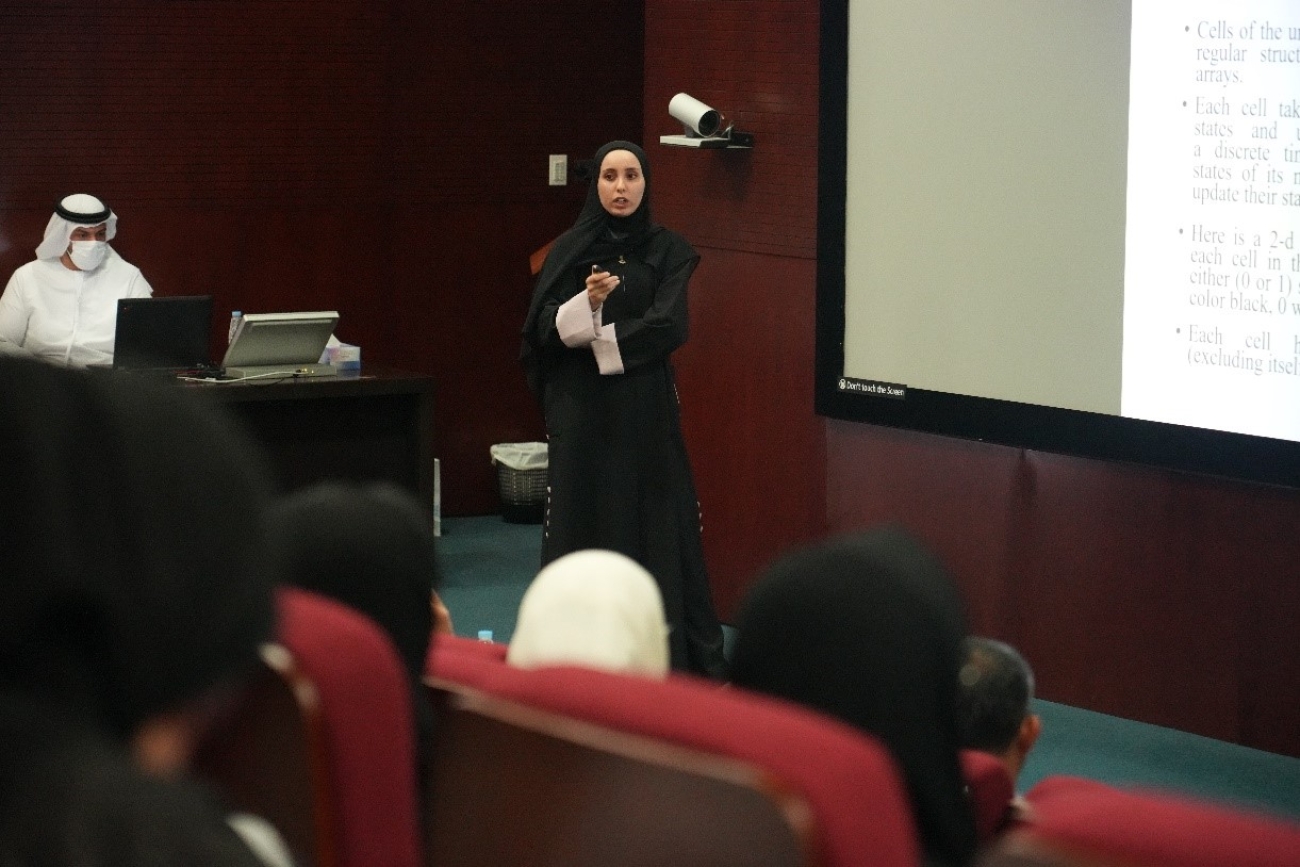Ms. Manar started by defining fractals, captivating geometric patterns that exhibit self-similarity at various scales, which are fascinating phenomena extensively explored through mathematical modeling. Rooted in chaos theory, fractals are generated by recursive mathematical equations or iterative processes. These equations describe the behavior of a simple geometric shape as it undergoes infinitely repeating transformations, resulting in intricate and complex structures. One of the most famous fractals, the Mandelbrot set, is derived from a deceptively straightforward quadratic equation. As we zoom into any part of this fractal, we discover a seemingly endless replication of the overall pattern, revealing more intricate details. Mathematical modeling allows us to understand the underlying principles governing fractals and aids in creating visually stunning representations of these enigmatic patterns, enriching our understanding of the hidden order within apparent chaos. Moreover, fractals have found applications in diverse fields such as computer graphics, art, finance, and natural phenomena, demonstrating the profound impact of mathematical modeling on our perception of the natural world.
Exploring astronomical wonders through mathematical modeling and fractals has unveiled an astonishingly captivating realm at the intersection of art and science. With the aid of advanced computational techniques, scientists and astronomers have delved into the cosmos, employing fractals as powerful tools to understand celestial structures and phenomena on both macro and micro scales. These intricate geometric patterns, born from elegant mathematical equations, have allowed us to perceive the grandeur of galaxies, the mesmerizing intricacies of nebulae, and the delicate dance of celestial bodies within vast cosmic tapestries. By harnessing the power of fractals, researchers have been able to simulate the evolution of stars, map the distribution of dark matter, and even shed light on the enigmatic nature of black holes. Through this innovative approach, we have gained fresh insights into the universe's secrets and reveled in the exquisite beauty that permeates every corner of the cosmos, thanks to the fascinating connection between mathematics and the celestial wonders beyond our reach.



